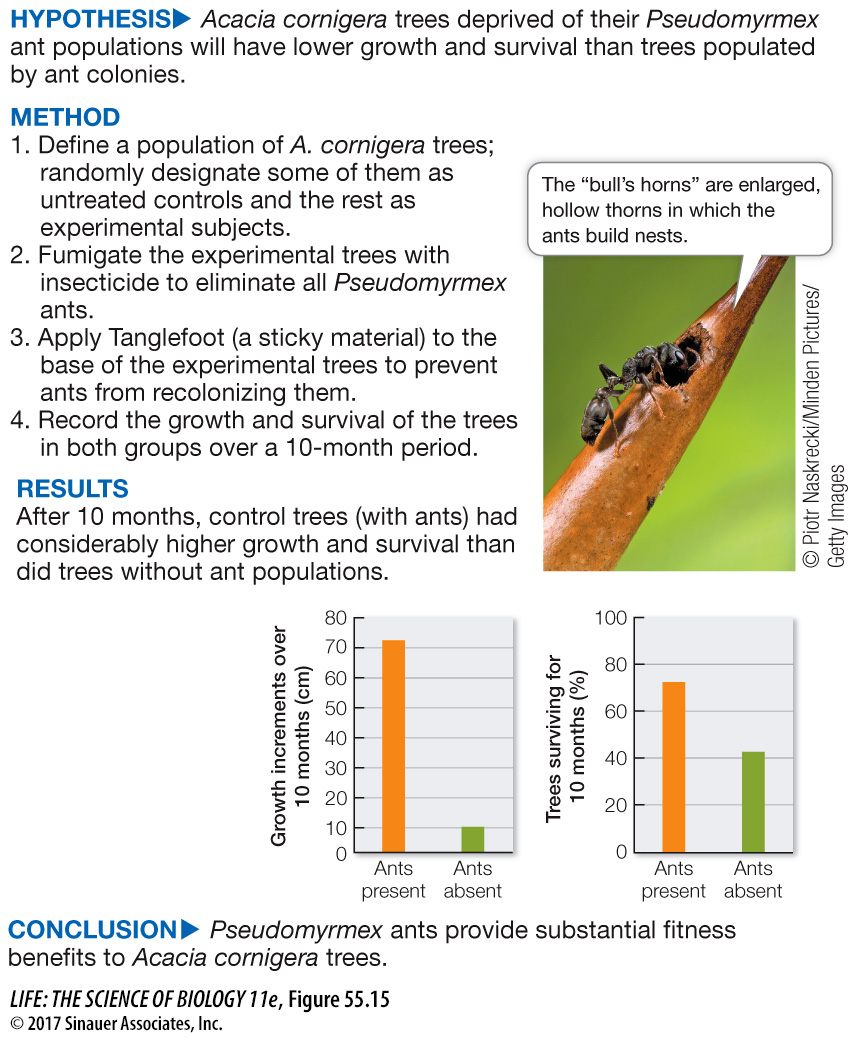Positive interactions can have dramatic effects on populations and communities
You have seen how positive interactions influence the physiology, behavior, and growth of species. Research has shown that positive interactions have effects at the population and community levels as well.
As you know from population biology, any interaction that affects the survival of individuals in a population can affect population growth. One example of the effects of a mutualism on population growth comes from an interaction between ants and acacia trees in Central America. In 1874, in Nicaragua, the naturalist Thomas Belt observed a peculiar interaction between bullhorn acacia trees (Acacia cornigera) and Pseudomyrmex ants. Bullhorn acacias get their common name from the enlarged, hollow thorns, in which the ants build nests. The trees also produce rewards for the ants, both in nectar-
Belt suggested that the notoriously aggressive acacia ants defend the plants against herbivores in exchange for food and shelter. This idea was tested by Daniel Janzen in 1966 when he removed ants from some acacias with insecticide, and showed that trees without ants suffered a reduction in growth and an increase in mortality (Figure 55.15). If a bullhorn acacia tree lacks an ant colony, the repeated loss of its leaves and growing tips to herbivores often kills the plant within 6–
experiment
Figure 55.15 Are Ants and Acacia Mutualists?
Original Paper: Janzen, D. H. 1966. Coevolution of mutualism between ants and acacias in Central America. Evolution 20: 249–
Bullhorn acacia trees (Acacia cornigera) have numerous structures that provide food and shelter for acacia ants (Pseudomyrmex). Daniel Janzen’s experiments demonstrated that the trees benefit from their association with these ants and that the energy expended in growing ant-

Animation 55.1 Mutualism
Finally, possibly one of the most important types of positive interactions is that of species that provide habitat for other species and thus have widespread community effects. These dominant species mostly include plants such as trees or kelps but can include animals such as corals and sponges. For example, coral reefs are home to many species of fish that cannot survive outside the reef environment. Likewise, species that are forest specialists cannot survive outside the cool and shaded environment of trees. Most tree species facilitate many other types of species by simply providing sites for attachment, shelter from extreme environmental conditions, or hiding places from predators. Many of these species have no direct effect on the trees in which they live, and thus have a commensalism with the trees. In all these cases, these dominant plants and animals are the very foundation of the community, which would not exist without them.